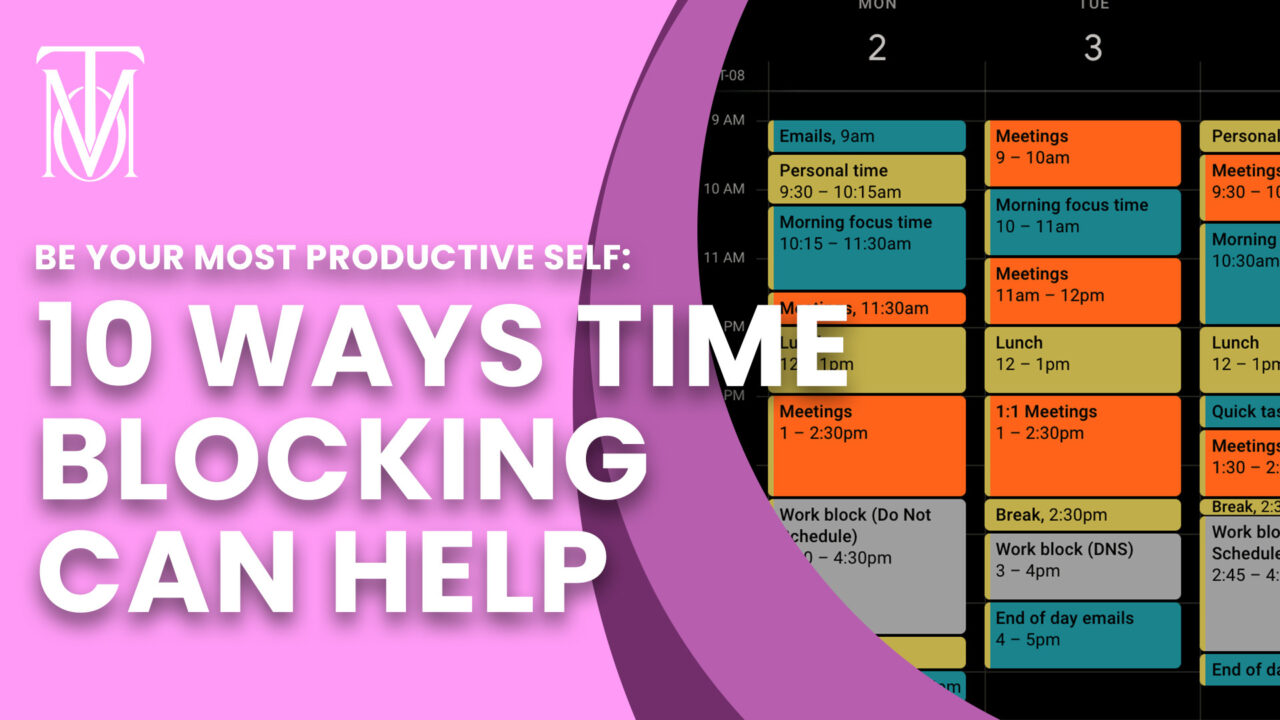We can count the number of times we’ve worked 8 hours in an 8-hour workday. Whether it’s never-ending meetings, frequent emails, or coworkers stopping in for a “short chat,” our productivity rarely lasts the day.
We’ll be in trouble if we plan our to-do list for an 8-hour workday but only get 1-2 hours of productive time. To-do lists, however, are not the only way to arrange our daily schedule.
Some of the world’s most productive individuals, including Elon Musk, Bill Gates, and Deep Work author Cal Newport, have sworn off to-do lists in favor of time blocking.
What Is A Time Block Schedule?

Time blocking is a time management strategy that allows us to plan our workday into specific time blocks. Each block is dedicated to completing a specific task, with the purpose of the person being focused entirely on that one task.
Time blocking, as opposed to an open-ended to-do list, helps us to concentrate on a specific schedule, eliminating any doubt about what we should prioritize each day and when. To create our time blocks, we should develop a work list ahead of time and make sure we do our own weekly evaluation before the next week.
This way, we’ll know what’s coming up, what needs to be adjusted, and what needs to be completed. The purpose of time blocking is to enable us to work without interruption or hesitation, ensuring that everything gets done. How often have we been absorbed in an important task just to be distracted by our pinging email, losing all momentum and focus?
It’s also simple to get too focused on one task to the point of disregarding others. Time blocking forces us to avoid multitasking and focus only on a single task. Since we can’t become a digital hermits and completely disconnect from the outside world, time blocking helps us to generate the time and space we need to remain focused and get specific tasks done in time.
Types Of Time Blocking

Task Batching
Task batching is grouping smaller and similar tasks together so they may be completed simultaneously. When we combine tasks in this way, we limit the flexibility of our tasks and force ourselves to switch between various responsibilities throughout the day.
This will not only save us time, but it will also make us more productive and effective. Instead of checking our email every 10 minutes, we may plan a few 20-minute blocks throughout the day.
Day Theming
Day-theming is another time blocking method that may benefit those with several areas of responsibility competing for their time and attention.
Rather than giving time to each area of responsibility that requires our attention, we might pick a theme for each day and dedicate a whole day to that set of specific tasks.
This is a more severe variant of task batching in which we gather all tasks related to one business area for each day. Leaders, for example, may dedicate one day to finance, another to marketing, and still another to strategy or operations-related responsibilities.
Timeboxing
Timeboxing is another time management technique that involves setting a time restriction for how much time we spend on each work. These jobs may be divided into smaller tasks, such as finishing the first draft of a document between 8:00 and 10:00 AM, editing the document between 10:00 and 12:00 PM, eating lunch between 12:00 and 1:00 PM, and finally finalizing the document between 1:00 and 2:00 PM.
We may schedule the document’s approval between 2:00 PM and 3:00 PM, then transmit the final version between 3:00 PM and 4:00 PM. Because we only have a limited amount of time to finish our tasks, these timeboxes drive us to work effectively. However, we should still be good at estimating how long tasks take for this to work better.
Does Time Blocking Work For ADHD?

Most persons with ADHD suffer from some element of time management, such as planning, prioritizing, and estimating task length.
It is the major reason why people seek an ADHD coach in the first place, and time management issues may have some of the most devastating effects on our careers and professional relationships.
While no one tool or technique will totally heal our connection with time, the time blocking method has been the most useful for me in supporting my time management challenges due to my ADHD.
Is Time Blocking Effective?
There are various reasons why time blocking is so effective, but the main one is that this method of working is particularly built for concentration. If we are familiar with Parkinson’s Law, we’ll know that the amount of work we have to do increases to fit the time we have to do it in.
So, if we have six hours to write an article, it will take us six hours to complete it – when it might have taken us four or even three. This is because we occupy the additional time with procrastination, context switching, or trying to do multiple tasks simultaneously, all of which research shows may hurt our brains, careers, and productivity.
10 Ways On How Time Blocking Can Help Us

- Time blocking is an effective way to get “shallow work” done.
- Time blocking helps us achieve goals.
- Time blocking promotes deep work.
- Time blocking gives us a set amount of time to do a specific task in that chunk of time.
- Time blocking makes us aware of how we’re utilizing our time.
- It helps us highlight our priorities.
- Time blocking helps us do low-value work.
- It helps us fight against perfectionism and procrastination.
- It helps us enhance our concentration and focus.
- It helps us to stop being people pleasers.
Final Thoughts
So many time management strategies and systems claim to alter our lives these days, not to mention productivity tools and time-blocking apps. But time blocking is popular because it works, and it’s a simple method to add structure and concentration to our day.
Time blocking may help us not only accomplish more productive deep work, but it can also help us get through shallow tasks much more quickly. Furthermore, it allows us to use our time more purposefully, making it simpler to attain our long-term goals.














